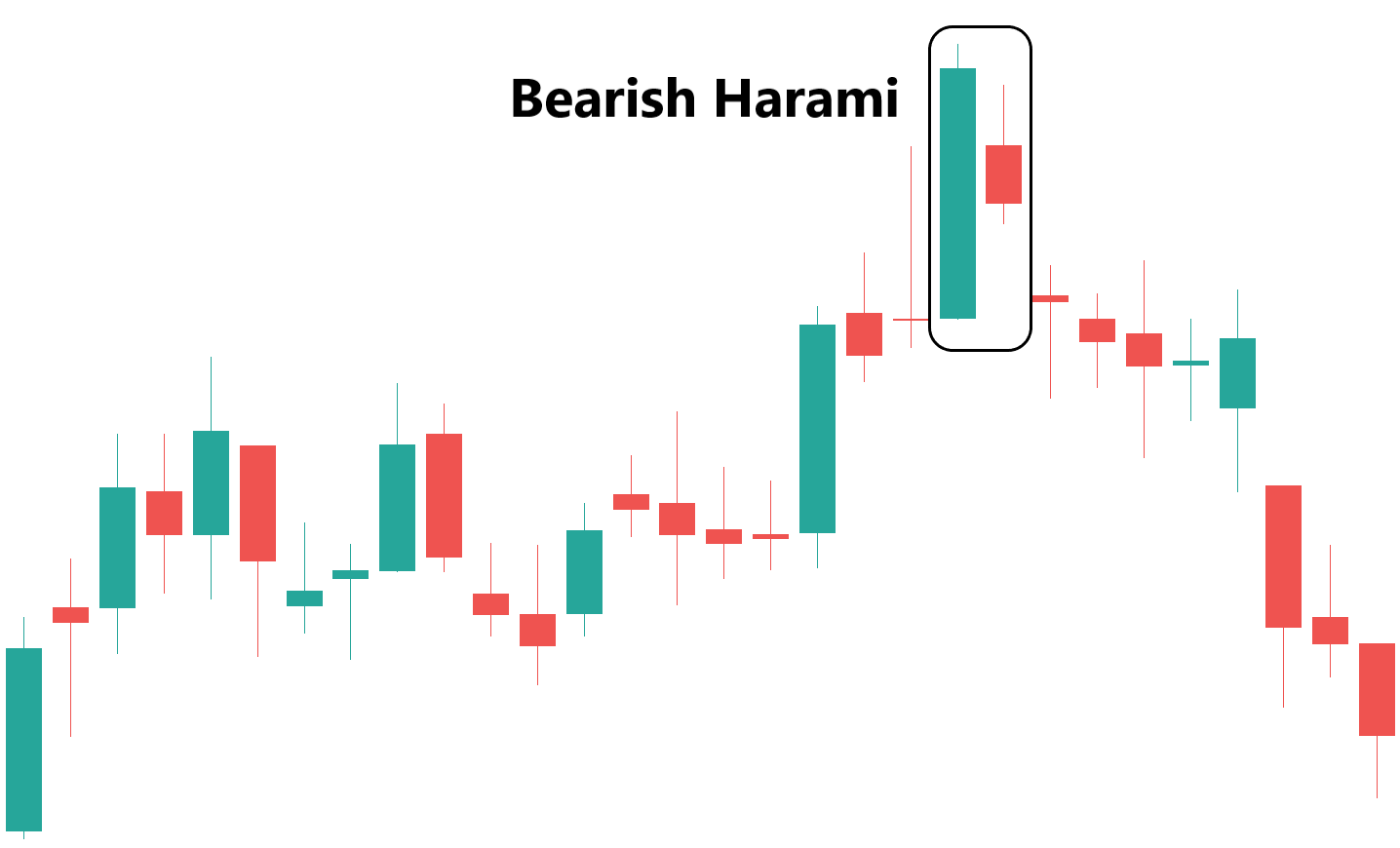Bearish Harami is a 2-candle pattern, which can form on the chart during an uptrend.
It’s a signal that the trend ‘could’ change from upside to downside.
The word ‘Harami’ might sound funny to us Indians, but in Japanese ‘Harami’ means pregnant.
For the pattern to be called ‘Bearish Harami’, the following has to happen:
- The first candle has to be large and green (bullish).
- The second candle should be red (bearish).
- The second red candle has to be smaller in size and should come somewhere in-between the body of the previous green candle.
Psychology of Bearish Harami
A stock has been rising for the last few days. One day, a big green candle gets formed on the chart – this means, the buyers are in complete control.
The next day, the stock opens gap down. Looking at the fall in price, those who are long (holding) on the stock, begin to fear that the stock has hit its short-term top and it could begin falling.
They sell their positions – this takes the price further down.
With the fall in price, the grip of the buyers is weakening. The sellers are trying to take control.
On the third day (i.e the day after the formation of Bearish Harami) – if the stock continues to fall, it’s a confirmation that the trend is likely to reverse – at least in the short term – and the price could correct.
Bearish Harami Trading Strategy
The ‘Bearish Harami’ pattern works fairly well across all time frames. It’s not as successful as the ‘Bearish Engulfing’, but the ‘Bearish Harami’ is quite common and can be formed very frequently on the charts.
Intraday traders can look at 5 minute, 10 minute and 15 minute charts. If the ‘Bearish Harami’ appears on any of these time frames and the next candle after the pattern is bearish, a trade can be taken.
For short term or medium term positions, the 60 minute, Daily and Weekly can be looked at .
Here’s a common strategy used to trade the ‘Bearish Harami’:
- When the ‘Bearish Harami’ pattern is spotted on the chart, traders wait for the next candle to confirm that the short-term change in trend.
- If the next candle is also red, then the trader can sell his existing positions in the stock or short it.
- The stop loss is the top of the green candle – i.e. first candle of the ‘Bearish Harami’ pattern.
The below infographic explains the ‘Bearish Harami’ in detail:

Bearish Harami Example
The below chart is of HCL Technologies. It shows the ‘Bearish Harami’ candlestick pattern that appears after an uptrend.
The ‘Bearish Harami’ is followed by a trend reversal – i.e. a stock that was going up, reversed and started falling down.
Check out the chart:

The 2-candles marked in the box is the ‘Bearish Harami’ candlestick pattern.
I hope this is now clear.
When you go in search of this pattern or any other candlestick pattern for that matter – do remember one important thing.
It’s the price movement that creates these candles. So, the patterns will never be perfect. Sometimes the second candle could be a little higher. It could be lower. There could be a large shadow.
Candles can appear in different shapes and sizes. The name of these patterns itself is not very important. We have to focus on the price action and try to understand why the candle has been formed.
When you see the chart and a pattern which looks like the ‘Bearish Harami’ appears – it should only act as a caution.
If you have a short term trade, you could look at it more closely and see how the price behaves on the next candle. If the price falls further, it could be a confirmation of a turn in trend.
Importance of Volume and Overall Market Movement for Bearish Harami
A couple of important points for ‘Bearish Harami’ to work more effectively.
If the volume of the second red candle is higher than the first green candle, it’s considered to be a further confirmation that sellers are trying to gain control.
Also, keep an eye on the overall market movement. If the second red candle of the pattern gets formed on a day when the market is performing well, then the probability of the stock falling – increases.


Leave a Comment